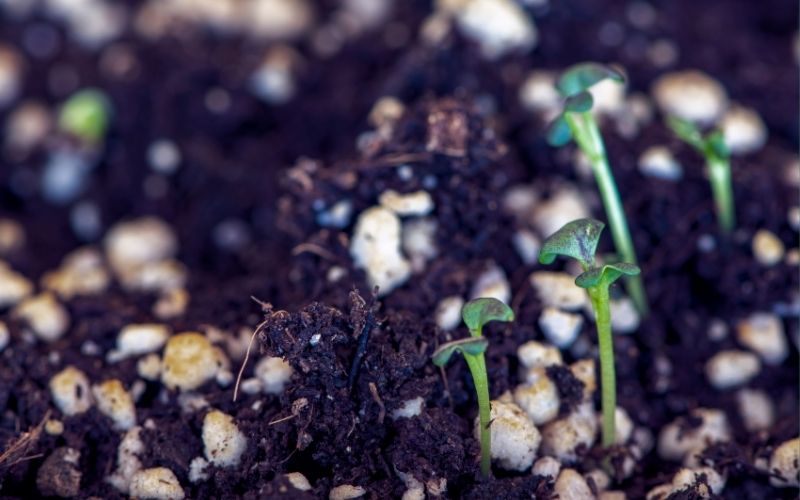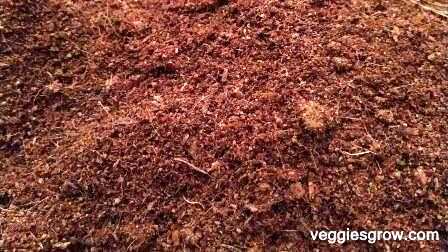Coco peat is a by-product of the extraction of fiber from coconut husks. The long coconut husk fibers that are extracted are used to manufacture ropes, mats, and a range of other products, but the short-to-medium length fibers and coconut pith that remain are of no industrial value.
Once most or all the fiber has been removed, the remaining coir waste, which is known as coir dust or coco peat can be used for gardening.

Coco peat can be purchased in its raw form in countries where coconuts grow and coco fiber is locally extracted or in the form of compressed, easily transportable bricks or bales, in countries where it is not produced but imported into.
If you are only able to obtain it in its raw form you should soak it in water for 4-5 days and then rinse it thoroughly three times before it is used for plants. This is because coco peat may contain quite a large amount of salt, which can hinder plant growth if not properly removed before use.
If you purchase coco peat as bricks or bales, you can soak them in water before use, as specified by the manufacturer, but it will usually be cleaned and free of excess salts.
Using coco peat for seed germination

Coco peat can be used without the addition of fertilizer for seed germination until seedlings develop their first set of true leaves. Using coco peat can speed up seed germination because it can retain a high level of moisture that stimulates seed germination, while its soft and mild nature makes it easy for delicate new roots to grow through.
Once your seeds have grown strong roots and their first set of true leaves, you can either transplant them into soil or larger containers.
Using coco peat as a growth medium for container-grown vegetables

Coco peat is ideal to be used as a growth medium for container-grown vegetables. I mainly like using coco peat for my container plants because it makes the container half as light as if it had been filled with soil, making it so easy for me to move my plants around when needed.
Ease of use is not the only advantage of using coco peat for growing vegetables.
- Coco peat has an ideal pH for growing vegetables
Coco peat has a neutral pH between pH 5 and pH 7, which is the ideal pH range for growing vegetables. This means that you will not need to add any amendments to control its pH.
- You can customize the amount of nutrients you feed your plant
Coco peat contains a very low content of most nutrients, and fertilizer must be added before vegetables are grown in it. Although coco peat contains very little nitrogen, calcium, and magnesium, it contains more than adequate amounts of phosphorus and potassium (the P and K, respectively of the all famous NPK). This means that fertilizers that contain lower amounts of phosphorus and potassium should be used.
Gypsum or dolomite limestone can be added to coco peat to improve the availability of calcium and magnesium. Alternatively, you can simply add crushed eggshells to increase the availability of calcium, and to certain extent magnesium.
You can use coco peat to grow vegetables in containers by combining 2 parts coco peat with 1 part compost. When I use coco peat to grow tomatoes or peppers, I usually add about 5-6 crushed eggshells along with commercially available compost that already has trace amounts of gypsum and dolomite limestone added, as these plants need a little more calcium than other vegetable plants.
- Coco peat can buffer nutrient fluctuations
A major advantage of growing in vegetables in soilless media is the ability to have more control over factors that affect the growth and production of the plant. Coco peat can buffer and reduce nutrient fluctuations, allowing the plant to access a constant supply of nutrients. This in turn results in more productive vegetable plants.
- Plants grown in coco peat need less watering
Another characteristic that makes coco peat ideal for vegetable gardening is its high water holding capacity. Vegetable plants grown in containers need to be watered once or twice a day depending on climatic and weather conditions, and also the type of plant being grown.
Using coco peat as a substrate for container-grown vegetables can allow the root area of the plant to constantly be exposed to enough moisture even under very hot and dry conditions.
As someone with a full-time job who usually has only limited time to care for my plants, using coco peat to grow vegetables, including water-intensive plants such as tomatoes, in containers has allowed me to grow healthy plants with minimum effort.
Consequently, it’s important to refrain from watering vegetable plants grown in coco peat if the plant has already received a large amount of rainwater. If coco peat remains soaked for an extended amount of time, the amount of oxygen that is available to the roots will be lower, which can result in many diseases and deficiencies, including blossom-end-rot.
Perlite or coco chips can be added to coco peat to increase the aeration of the medium.
- Coco peat has antifungal properties
A risk factor associated with using soilless media for growing vegetables is that pathogens can easily develop in most types of media, but coco peat has antifungal properties due to helpful bacteria that naturally develop in it, which protect plants from other harmful bacteria.
- Coco peat can be reused
Another advantage of using coco peat is that it can be reused because it decomposes very slowly. Once you have grown one crop cycle of vegetables, you can dry out the coco peat, remove any remaining roots, wash the coco peat and then add fertilizer and reuse it. This makes using coco peat a cost-effective and environmentally friendly option.
- Coco peat can be composted
If in case your current crop does suffer from a bacterial or viral infection, or a pest infestation, in which the pests may have reproduced in the coco peat, then it’s better to get rid of the coco peat. You can safely add the coco peat to your compost heap instead of reusing it. It can even be added to vermicompost bins because even earthworms can comfortably live in and eat it.
Using coco peat as a soil amendment
Alternatively, if you have been using your coco peat for a couple of crop cycles, and you feel that it has lost most of its water and nutrient retention properties, you can add it to your garden soil as a soil amendment.
Coco peat that has been used for container-gardening will contain nutrients due to decomposition and ability to retain nutrients that have previously been added.
As a soil amendment, coco peat will also increase the water retention capacity of the soil. For this purpose, you do not need to have previously-used coco peat, but you can even add new coco peat to improve soil health.
Using coco peat as mulch
Coco peat is also ideal to be used as mulch. Its ability to retain water and nutrients also play a big role here. However, coco peat should be topped with a layer of compost or grass clippings when used as a mulch in vegetable gardens since it should not be allowed to dry out. Additionally, it would be best to avoid adding coco peat directly near the stem of the plant and use only thin layers because it can get very damp and remain so after it rains. Alternatively, coco peat can be mixed with compost and used as mulch for a balanced covering.
As you can see, coco peat is not only an easy-to-use growth medium for growing vegetables in containers but using it can help you grow more productive vegetable plants that are more resistant to pathogens, and it will also make caring for your plants easier. Additionally, it’s also suitable to be used as a soil amendment and mulch.
Have you tried growing vegetables in coco peat? – Let us know in the comments


I never knew about coco peat- so glad I read this – what a great option for container plants!
Glad to be able to introduce you to coco peat. I use it to grow all my container vegetable plants.